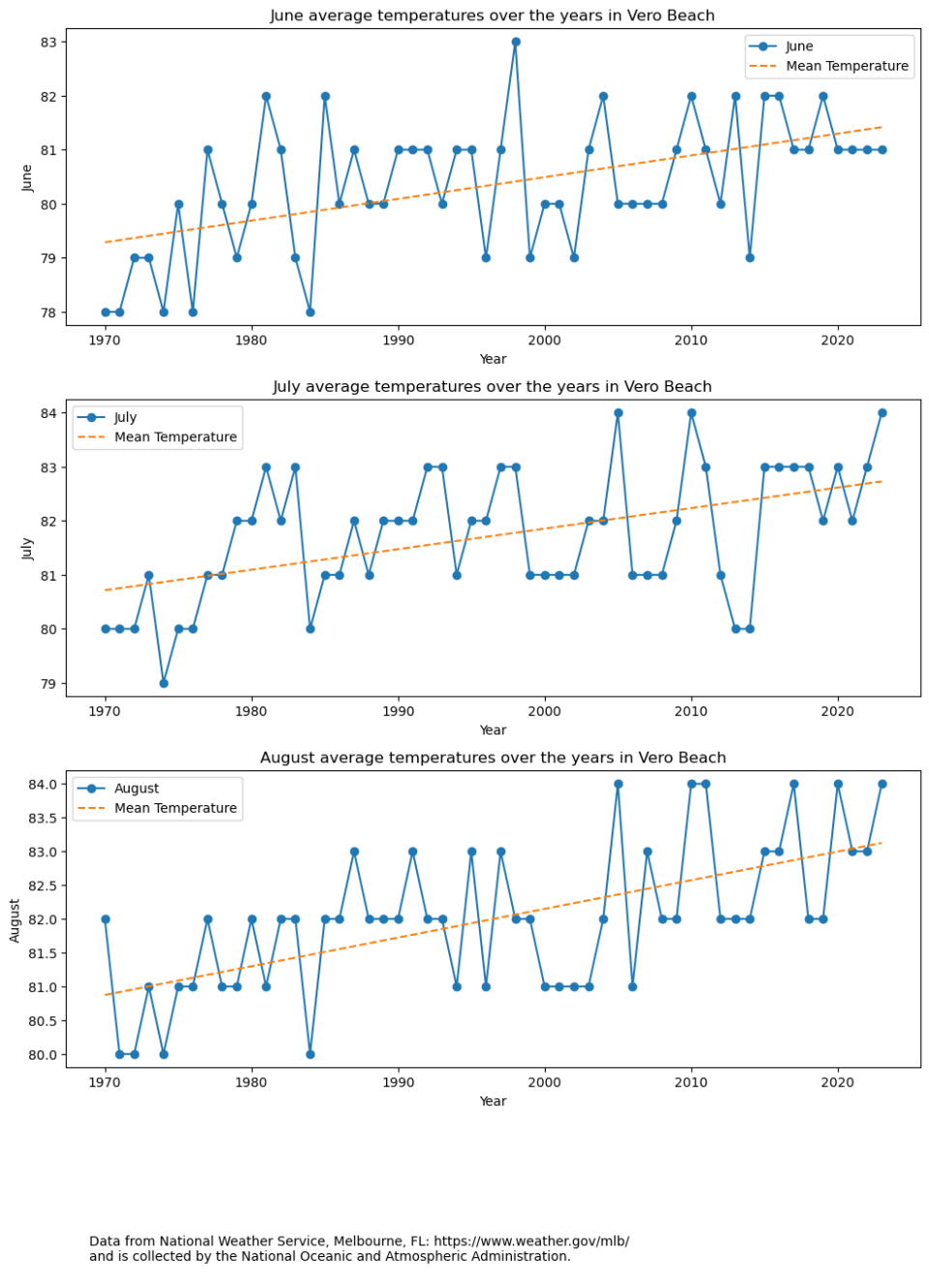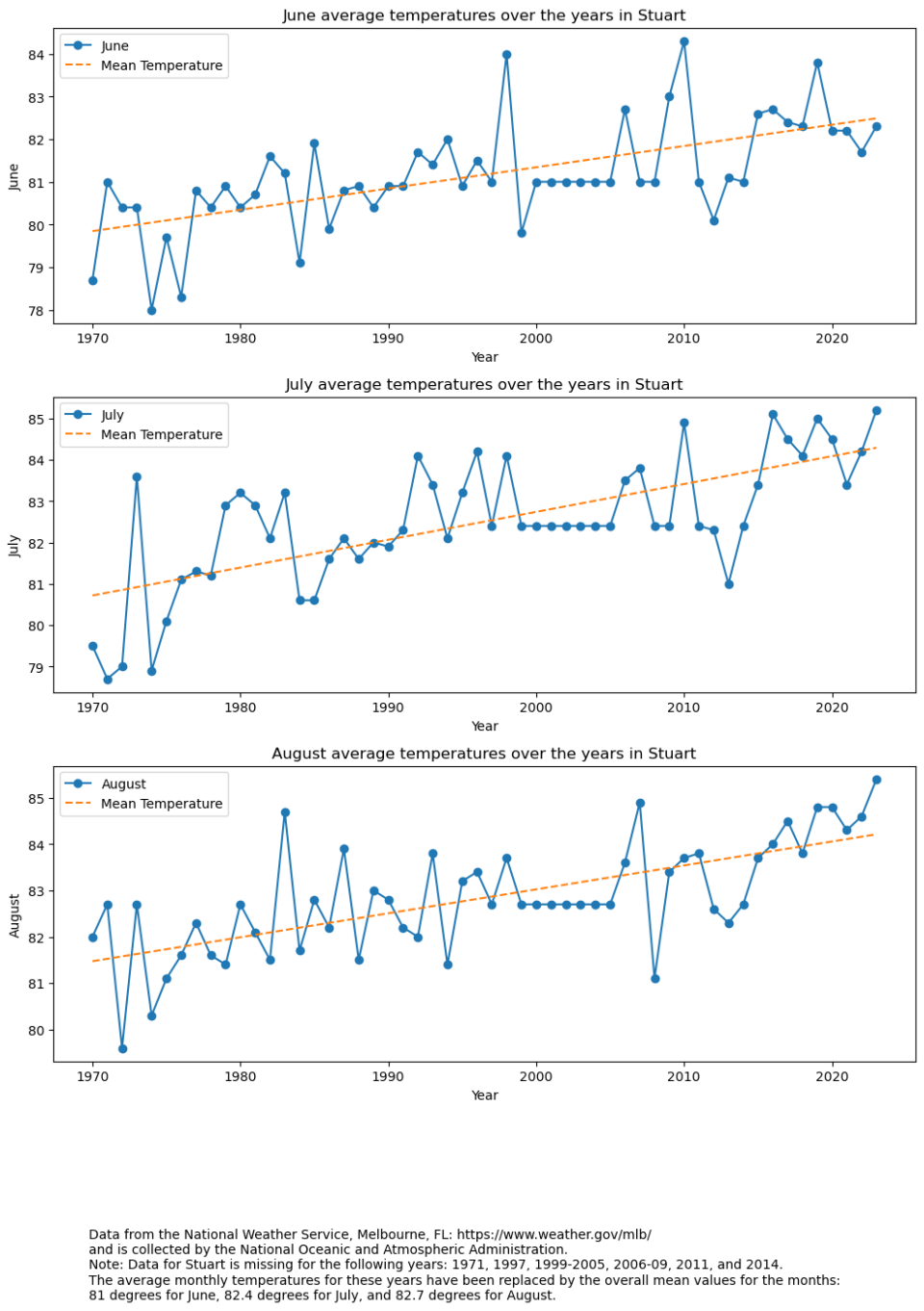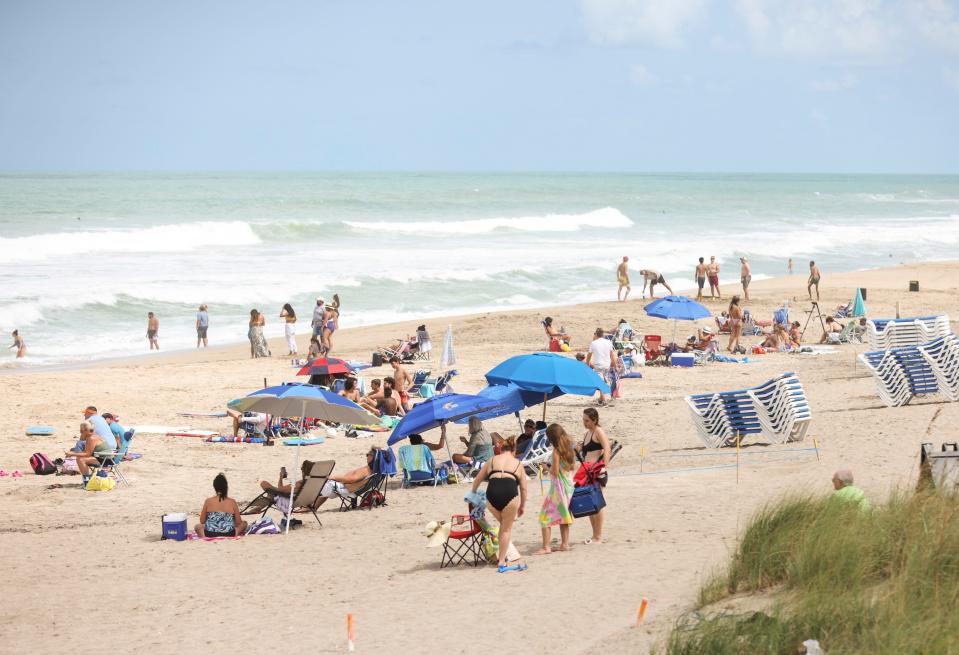Vero Beach, Stuart record hottest-ever August, with the heat wave likely to continue
Vero Beach and Stuart each recorded its hottest average temperature ever for August, and Fort Pierce witnessed its second-hottest-ever August, the National Weather Service said Friday.
With an 85.4 degree Fahrenheit average, Stuart also had its warmest August on record, breaking the 2007 August average of 84.9 degrees, said meteorologist Derrick Weitlich, with the National Weather Service Forecast Office in Melbourne. Records for the area date back to 1936, he said.
Temperatures this August in Vero Beach reached an average of 84.3 degrees Fahrenheit, marking the highest average recorded since records began in 1942. The last time temperatures reached such heights was in 2020, when they peaked at 83.8 degrees, and before that, in 2011, when the average temperature stood at 83.7 degrees.

Eleven of the hottest Augusts on record for Vero Beach have occurred in the past 18 years, from 2005 to 2022, Weather Service data shows. Since 2000, the average temperature at Vero Beach for August has been 83 degrees or higher, with the lowest average temperature in this period recorded in 2000.
Fort Pierce recorded its highest mean temperature for August since 2000 this year at 83.9 degrees (tied with 1941). This is the second-hottest mean temperature in August in Fort Pierce since 1924, when it was 84 degrees, weather data shows.

This heat wave is likely to continue into September, said Kole Fehling, meteorologist at the National Weather Service at Melbourne. “For September, there is a chance that the temperature will be 40 to 50% above normal, with normal levels of rainfall,” Fehling said Saturday.
Impact of the marine heat wave
Across Central Florida, 2023 has been the warmest year on record, Fehling said.

Higher ocean temperatures and lower-than-average rainfall are contributing to the heat wave. “It's a combination of really warm ocean temperatures and drier conditions as well. It also leads to lesser cloud cover,” Fehling said.
In El Niño years, such as this one, ocean temperatures, particularly near the equator in the Pacific Ocean, tend to be warmer than usual for the given period. And because of the marine heat wave, ocean temperatures around Florida's peninsula have been 2-3 degrees higher.
These warmer waters prevents temperatures from dropping as much overnight, increasing the temperatures during daytime. "Heat has a cumulative effect, so it builds over time until something disrupts it," Fehling said.
And, despite the usual association of El Niño with wetter conditions, the Treasure Coast has experienced drier weather, Fehling said. “Overall, it's been warmer and drier, especially for the Treasure Coast," he said.

Many stations in Florida, including Vero Beach, also recorded their hottest July on record, according to the Florida Climate Center at Florida State University. July 2023 is tied with June 1998 as the hottest month ever in Florida.
Other Florida cities which also recorded highest mean temperatures for August this year were Orlando and Daytona Beach, at 85.9 degrees and 85 degrees, respectively.
This article originally appeared on Treasure Coast Newspapers: Vero Beach, Stuart post hottest August since records began

